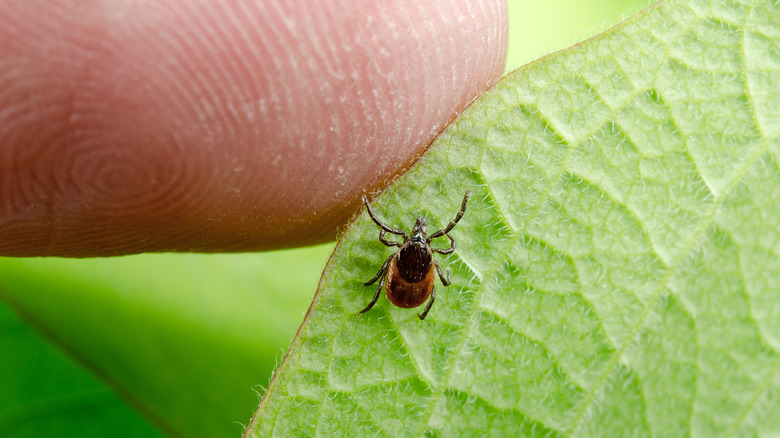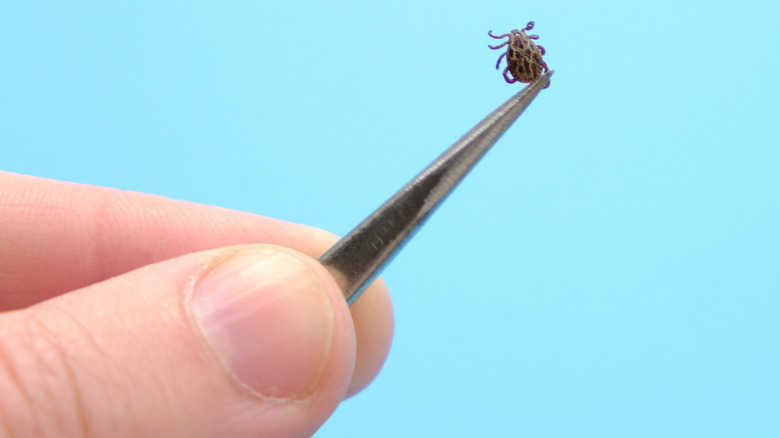This Is What A Tick Bite Does To Your Body
If you went camping as a kid, you probably heeded your parents' advice to thoroughly check yourself for ticks after returning from a night spent in the woods. Ticks are a unique kind of pest. Unlike insects, they're actually a member of the arachnid family (via the National Pest Management Association). Further separating them from other bug-like critters, they don't have antennae or possess the ability to jump or fly as fleas and mosquitoes do.
The way ticks bite humans and animals is also distinct (via the Institute for Quality and Efficiency in Health Care). They may spend hours searching for an optimal area to feed once on the body. There are different types of ticks around the world, but most live underground during colder seasons and seek out warm, moist environments when they emerge in warmer weather. Because ticks feed on the blood of their hosts, human skin is a prime spot for them to feast. But what do these pests do once they make it onto your body, and how can they impact your health?
Symptoms and treatment of a tick bite
Once ticks decide to bite, these parasites hook on using the sharp structures of their mouth, drive their feeding tube into the skin, and nourish themselves until satisfied (via the Institute for Quality and Efficiency in Health Care). During this process, an exchange of fluids takes place in which the tick dispenses saliva into the body and simultaneously takes in the host's blood as food (via National Geographic).
Tick bites are often unnoticeable until after the fact. According to the Mayo Clinic, common symptoms include redness at the site, mild swelling, and the development of a sore. However, some tick bites can pose more severe health risks. If the tick is carrying bacteria, humans may be susceptible to illnesses, such as Lyme disease.
Time is of the essence when it comes to tick bites. After locating a tick on your body, remove it safely and promptly. According to the Johns Hopkins Lyme Disease Research Center, it's best to use tweezers rather than your fingers for removal. Pull steadily to dislodge the tick head without using any jerking motions. Doing so may remove the body of the tick but leave its mouthparts hooked into the skin. Afterward, cleanse the wound with soap, water, and rubbing alcohol to prevent infection. The Mayo Clinic stresses the importance of watching for symptoms that signal the need for emergency medical care such as paralysis, difficulty breathing, or heart palpitations.


